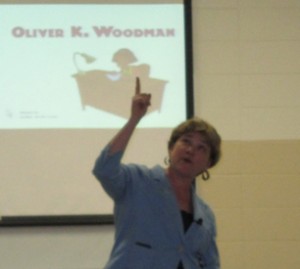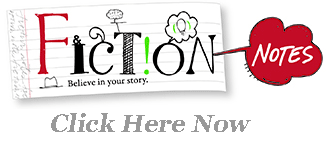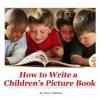new posts in all blogs
Viewing: Blog Posts Tagged with: prewriting, Most Recent at Top [Help]
Results 1 - 10 of 10
How to use this Page
You are viewing the most recent posts tagged with the words: prewriting in the JacketFlap blog reader. What is a tag? Think of a tag as a keyword or category label. Tags can both help you find posts on JacketFlap.com as well as provide an easy way for you to "remember" and classify posts for later recall. Try adding a tag yourself by clicking "Add a tag" below a post's header. Scroll down through the list of Recent Posts in the left column and click on a post title that sounds interesting. You can view all posts from a specific blog by clicking the Blog name in the right column, or you can click a 'More Posts from this Blog' link in any individual post.
Try Book 1 for Free

Last Friday, I wrote 4000 new words on my WIP novel. That’s a great day for me. But it was only possible because Thursday was a planning day.
When I work with students and teachers, I encourage lots of prewriting. My book, Writing for the Common Core, is essentially a book of prewriting activities. Here’s the thing: as professional writers, we know that our best writing comes with revision. That’s what students need to do, also: revise. However, that often devolves into merely copying a piece and cleaning up handwriting, especially in the lower grades. True revision, a re-envisioning of how to word something or the content to include/exclude, is hard to achieve in a 50-minute class.
Instead, I ask teachers to provide multiple prewriting activities. By giving students a rich and varied prewriting experience, they come to the first draft more likely to produce something worthwhile.
That’s what I did last Thursday, lots of prewriting.

Setting. One important thing for me was to locate my story on the slopes of Mt. Rainier. I used Google Earth to track the roads where my characters would be traveling. Using the program’s tools, I measured distances as the crow flies and distances along roads, so I knew how long each drive (and potentially chase scene) would take. I switched to the aerial view to look at the landscape–mostly wooded with some open areas.
Sensory Details. Once I knew where this section of the story would happen, I concentrated on the sensory details. What would they see, hear, touch, taste and feel? What would the day’s weather be like? Rainy, snowy, sunny, windy? Along with that, I thought about the mood of the events. Would the characters be frantic, excited, hopeful, angry, or bored?
Scenes. I also took time to sketch out the structure of a couple scenes. Scenes need a beginning, middle, end; add in conflict and a pivot or turning point; stir with some great emotional development. By planning ahead, I knew the general outline of what would happen.
Flexibility. With all the planning, though, I approached the writing with flexibility and let the moment carry the story forward. I “mostly” knew what I would write, but it always surprises me how much it changes and develops as I write. It’s never exactly what I planned; it’s usually better.
I’m not really an outliner; but I don’t write by the seat of my pants either. Instead, I need this half-way place, where I do rich prewriting activities and halfway plan, and then see where it all takes me. HOW you say something is everything. It’s not just what the story is or how well you plot. For me, the important thing is how you say it. What word choices do you make and why? What sentence structures and why? What pacing and why? The true writing happens when I write. But I love the prewriting because it enables me to get 4000 words done in a single day. Well, really, that was two days work: one to prewrite and one to write. Either way you count it, that was a couple great chapters to put behind me.

Hi folks, I'm writing a series about how certain artistic skills enhance other artistic skills. I am an artistic and crafty person. I buzz around art. I will dip my toe into most forms of expression. There are a few that I've focused on and have found that those experiences have informed my novel craft. This week I'm going to talk about sewing lessons.
I love textiles. I always have. I know how to knit, embroider, and crochet. I can even do some tatting. I know how to dress a loom and weave fabric. I also sew. I learned how to sew in junior high. I've made over a hundreds of shorts, jackets, Halloween costumes, dresses, pants, toys, and quilts. I know how to use a pattern. I know how to create my own.
When I write, my sewing skills always come to me. Sewing starts with a provocative idea. Making a well made garment takes time and work. I fully envision the garment I plan to make. I fully envision the book I plan to write too. This is something in my head. Yes, I draw sketches and doodle on paper, but the big work is a complete internal vision. I see the thing I want, then I proceed to bring it into the light of life. Writing a book follows the same process. Just like a physical garment, I must envision a physical book at the beginning of the process.
To sew something I need a pattern. I have to decide do I want to use a pattern off the shelf or do I want to try and go it alone. I start by looking through books of patterns. For writing I look at books in the genre. I gather together patterns that are close to my vision. I always tweak patterns for sewing and writing. I feel a need to put my stamp on my sewing work and my writing. I have certain sleeves that I love, and often those sleeves go into the WIP garment , even if the pattern calls for something else. I don't like the way certain collars look so I will modify to put on a collar that is more of my thing. In writing, I have certain scene structures that I use often. There are some sorts of pacing that I will never use. The list goes on.
After I've got my pattern, chosen my fabrics, picked out my notions, gathered my tools, I'm ready to sew. In writing, I gather scrap art, pick characters, research subjects, gather thematic elements, and gather my tools. I cut out the pattern, and it's time time to sew. I write an outline and it's time to write. Sewing is painstaking work just like writing. You have to pin each piece just so. You must also fit in each scene just so. I have sewn in pieces backwards, upside down, and on the wrong side. It hurts to pick out all those stitches. No matter how slow you work, there are always necessary adjustments. It's the same with writing. I put scenes in the wrong place. I have to reorder events, sometimes I have to edit out huge swaths of my planned plot. I've got too much going on.
Sewing helps me write.
I often find myself working through writing problems by comparing them to sewing problems. The comparison helps me find my way. Perhaps you have some artistic skill that will help guide you, Will help you out of tight spots, Will help you complete your WIP. Good luck on your journey. I will be back next week with more lessons.
Here is a doodle for your week: This was a doodle I did when envisioning a dress.

Here is quote for your pocket"
Sewing mends the soul. ~Author Unknown
Hi, folks! I'm continuing my series for the month of March. In honor of Saint Patrick's Day, I'm calling this series: Lucky Serendipity. I have tripped across many moments in life that really direct the whole of my writing future. I call these moments: lucky serendipity. So here is the story of one of those moments.
A few years ago, I came to the end of a project and was wondering what to write next. I had no idea. I was flailing around with ideas: something about a hurricane, a lame superhero with the ability to walk on water, and a squirrel who breaks the "squirrel code" and talks to a human to solve a murder. Nothing was really working. I had never come to a place like this before. I had writer's block!
I was a brooding on the couch like some descendant of Grendal. Driving the car pool, three teenagers plus one, and volunteering at the elementary school mixed with writer's block does stuff like that to you. My daughter Jubilee breezed into the living room and plopped on the couch. She was born sunny-side up and has Beowulf attitude I grumbled and griped about my dilemma. I could see the wheels turning in her head. "You should write about plumbing,' she said. "I love your stories."
It's a tradition in my family to tell stories about your life to your children. When I was in high school and in college, I worked as a plumber's helper during the summer. It was tough work and I had plenty of stories about those days.
"That's your next book and you'll publish it for sure," Jubilee said. She popped off the couch and ran off to chat with her friends about fashion, books, and the horror of high school.
Easy for her to say. Gosh, I needed chocolate. Her idea would not leave me. I began writing. I will say that first scene made me laugh so hard that I fell off the couch. My block faded away. I'd started a little project entitled "Plumber Gal" at the time. This story grew into my novel: Plumb Crazy, published by Swoon Romance, coming out on June 30.
It took a while to get here. All those teenagers are new adults now and the plus one is a teenager. I have been on the best journey. I hope the lucky serendipity that inspired my book, inspires you. I will be back next week with more Lucky Serendipity.
Now the doodle. I call this one: "Before Goliath."

And last of all, a quote for your pocket.
The Almighty makes miracles when he pleases, wonder after wonder, and this world rests in his hands. Beowulf, lines 930-932.
Today, there are no words on the page that I can point to and say, “I wrote that today.”
But it was still a successful writing day.
I reread the first book of a series and got the voice and characters back in my head. In the early stages of prewriting, I need to see what went before and how I can play a variation on the them for this new book.
I worked on new characters and situations for the second book. And it will take me a couple more planning days, as I try something, reject it, and try something new. The firs things that come to mind are likely the weakest and I need to push past those cliches to something more fun. Unfortuntately, that means there has to be something there to push past. Which means grunt work of writing bad ideas to reject, so the good ideas can come forward.
I set up a folder for Book 2 and added two documents to it. Getting organized mentally, getting files organized, setting up work folders–all of that prepares me mentally to work. I am setting myself up for success. I will have all the tools and processes in place.
I decided to start on this next Tuesday, September 3. By setting up a “trigger,” or a deadline, it gives me a mental head start on what I need to get done before then and encourages/forces me to make decisions this week that will create a successful start to a new project.
I also set a deadline for finishing the first draft of the project. By adding the end-date to the project, it also sets me up to be professional in the writing, to set a goal of writing a certain amount per week. 
In everything I do this week, I plan to set myself up for success. What are you doing to set yourself up for success?

By:
Administrator,
on 2/6/2013
Blog:
Margo Dill's Read These Books and Use Them!
(
Login to Add to MyJacketFlap)
JacketFlap tags:
brainstorming,
Journal Writing,
Middle Grade Novel,
Middle School Teachers,
prewriting,
Elementary Educators,
six traits of writing,
Books With Social Studies Content,
Writing Skills,
Book Club Possibility,
six plus one traits of writing,
Finding My Place,
Finding My Place by Margo Dill,
idea trait,
Add a tag

I am currently creating a short guide (PDF or Word) that shows how you can use my book, Finding My Place: One Girl’s Strength at Vicksburg (ages 9 to 12) in 6 + 1 Traits of Writing lessons. The guide will be free for the teachers at any workshops I do at schools and if a teacher/home school parent buys a copy of my book. To give a little preview, I thought I would show an excerpt of each trait on the next few Wednesdays. So, here we go. . .
IDEA is one of the 6 + 1 traits of writing. It is important to start with a good idea when you write because it makes it easier for the words to flow and more interesting for the reader. Usually the first idea we come up with is not our best idea. We need to dig deeper to find a unique idea. You can do this with brainstorming, word webs, free writing, talking to a friend, or even research. For example with my book, I wanted to write about the Civil War for kids, but there are already a ton of books out there about the Civil War. SO, I had to dig deeper, and I did some research. Then, I decided to tell a story from the Confederate viewpoint, make the main character a citizen and a girl instead of a solider/drummer and a boy, and I set it during one specific battle that had extremely interesting elements, such as the citizens living in caves to protect themselves from the Yankees’ bombs.
In Finding My Place: One Girl’s Strength at Vicksburg, Anna, my 13-year-old main character, loves to write. She writes about events that happen in her daily life, poems, fiction stories, and letters. In one section toward the end of the book (page 134, chapter 21), Michael, Anna’s older brother, asks her to tell a story she has written. At first, she doesn’t want to because she doesn’t think it is a very good idea. Then when she does tell it, she realizes she never really ended the story. She started with the premise of a selfish orphan living with an elderly woman, who delivers food to his room. One day the food stops coming, and the orphan gets angry. He must leave his room to investigate.
 Michael asks her what happened, and Anna replies, “Yes, she had a heart attack. I never really finished the story.”
Michael asks her what happened, and Anna replies, “Yes, she had a heart attack. I never really finished the story.”
Here’s where you can use the IDEA trait with your students and this premise. Give them 10 minutes to brainstorm an ending to Anna’s story. Give them a few questions to think about: What could have happened to the elderly lady? What did the orphan do next? Does the elderly lady necessarily have to be deceased? Could she be teaching the orphan a lesson? And so on.
After the 10-minute brainstorm session, have students discuss their ideas with a partner. Then have a class discussion, where you make a list of the different ideas.
When concluding the lesson, talk to students about a fiction story they have written and ask them to think about their ending. Are they satisfied with it? Could they use these techniques to come up with an alternate (and perhaps better!) ending? Work on these new endings during the next writing period.
For more information on FINDING MY PLACE and to read an excerpt, please go to this link: http://margodill.com/blog/finding-my-place/

The #1 Writing Lesson: Prewrite for Effective Essays
Paper Lightning: Prewriting Activities to Spark Creativity and Help Students Write Effectively
by Darcy Pattison. Prufrock Press
, 108 Pages. ISBN: 978-1-877673-77-1
When faced with an essay writing prompt, kids need to slow down and plan before they write. The best writing lesson you can teach students a variety of prewriting activities. Let your teaching go beyond simple outlining and graphic organizers to encourage new ideas and ways of thinking. In short, a rich prewriting environment encourages exploration and expansion of ideas that will result in stronger essays and creative writing
If You Teach Students To Do Multiple Pre Writing Activities, Essays Improve
If The #1 Writing Lesson is to prewrite, then The #2 Writing Lesson is to teach students to do multiple prewriting activities, focusing on different aspects of the writing process. For example, some prewriting lessons focus on expansion of ideas, while others focus on vocabulary or language used, which impacts voice. For personal narrative essays, teach students to remember or recall details for the essay. Descriptive essays benefit from lessons on sensory details. Other activities teach students to evaluate the information that research turned up. Some prewriting tasks teach kids to structure or outline the information in a convincing way for a persuasive essay. Prewriting can even direct the research needed for an expository, informational, descriptive, analytical or persuasive essay.
Lesson Plans, Prewriting Assignments & Brainstorming Ideas
For any given writing prompt or writing assignment, you’ll likely teach four or five prewriting activities to strengthen the writing process. That’s where Paper Lightning: Prewriting Activities to Spark Creativity and Help Students Write Effectivelycan help.
- For teachers: Over 30 Prewriting Activities, ready to teach, supports teaching the writing process for descriptive, expository, personal or persuasive essays; lesson plans for folktales and short story
- For teachers: Printable Student Pages, easy to teach
- For teachers: Sample Answers
- For teachers: Use with any approach to teaching writing. Includes chart for correlations to 6 +1 Writing, Scaffolded Writing, Writer’s Workshop and the NCTE Beliefs About the Teaching of Writing.
TABLE OF CONTENTS
DOWNLOAD SAMPLE PAGES
- Introduction
- Acknowledgments
- Oral Storytelling
- Using Strong Words
- Adding Details
- Ugly Writing
- Organizing Facts
- Planning to Persuade
- Planning Fiction
- Folk Tales
- Sample Answers
DARCY PATTISON: Children’s Book Author and Writing Teacher
Children’s book author and writing teacher Darcy Pattison understands
the writing process from the inside out. She is the author of The Journey of Oliver K. Woodman (Harcourt), which received starred reviews in Kirkus and Bulletin of the Center for Children’s Books and was included on the Best Book of the Year lists from Child magazine and Nick Jr. Family Magazine. MORE About Darcy Pattison
ORDER NOW
When you’re writing do you tell people what your working on or not?

Darcy, the Storyteller!
When I teach narrative writing, I often ask students to do
prewriting activities that involve oral storytelling. Students tell about something that has actually happened to them.
It’s helpful to do this because you can orally narrow down a topic, rehearse details, ask for more details, and even do oral revisions before they ever put pencil to paper. I like this as a prewriting strategy for student writers.
But then, I thought about my own writing. Do I tell others about what I’m writing? Do I rehearse the story orally, decide to add/subtract details, look for weak areas and shore them up with an oral revision? No!
Why not? I don’t know. Certainly, I tell real events over and over and hone the details, presentation, delivery of the punch line. But fiction? Somehow, it’s different? I don’t like telling the story before hand?
Would I benefit from doing that? Maybe. I’m working on a science fiction story and realize the scientific basis of a couple things must be meticulous. So, I am discussing those things, trying to get it straight what might and might not happen, not using pure invention here. But that’s nonfiction stuff again.
The question is this: for your fiction, do you tell people what you’re working on? Why or why not?
 NonFiction BookBlast
Sunday, June 26, 2011. 8-10 am.
ALA Conference in NOLA.
NonFiction BookBlast
Sunday, June 26, 2011. 8-10 am.
ALA Conference in NOLA.

Rich Prewriting Enhances Novel
I’m currently researching material for my novel.
Setting. I’ve sort of settled on a setting; often for me, the setting comes first. I’m looking at sequences of events, variations on those sequences, variations in how the setting might look at different times, some of the odd-ball jobs in this setting, etc. I’m looking for something that might ground the scene in the particulars of daily life. For example, is there a coffee shop nearby, or maybe a playground. (Or, is it plausible for me to invent one of those.)

Characters. While I’m thinking about setting, I have to ask myself what a native of this setting would be like: cheerful, discouraged, rambunctious, angry, etc. I might go so far as to go and sit near a similar setting and just listen to the conversations.
Plot. I’m wondering what could take place in this setting. In some cases, that means I need to investigate the logistics of something to make sure it can work.
Doing all that research is Prewriting. When I teach writing to kids, I insist on multiple prewriting activities. They sometimes do up to eight quick activities before they write. A rich prewriting environment means stronger first drafts. I’m figuring that if kids need eight prewriting activities, I need to do even more.

Ah, April! This month my series is going to be "April showers, bring May flowers." I'm going to chat about prewriting. The stuff you got to do to do the stuff.
Something about Ernest Hemingway has always provoked me. He really lived a dynamic life. Not one that I wholly admire, but one that I see was a great breeding ground for vast stories. He, like many artists I've known, was feeling a lot of pain from living -- a sort of live wire sparking and electrocuting, dangerous. To write you must live.
So many writers, famous figures in history to friends I've known, there is this common thread -- they are all so damaged. Now you may be a writer and not be damaged (yet). I honestly don't think you can make it through life without dings, dents, cracks, and breaks. The sooner you embrace that you will have to do this writing from the shattered places with a basket under your arm to help you pick up the pieces, the better. Understand that all this shaping from the winds of time is what is driving your stories.
Let living, the glory and the pain of it, guide you and enrich you. And for those that share my belief in a power greater than the swirling galaxies, the loving heart of the universe, God with us, Emmanuel, the Christ, let that treasure of the divine shape your words just like water carves the valleys, wind shapes mountains, volcanoes raze landscapes, sunshine powers the great storms that traverse the planet and the currents of our oceans. Don't resent the days you do not have time to write, know that these days are probably the most important ones for your creative journey.
Thank you for dropping by. Come back next week for more April showers. Seize the day.
This week's doodle is "Moses looking at the burning bush". 
If people bring so much courage to this world the world has to kill them to break them, so of course it kills them. The world breaks every one and afterward many are strong at the broken places. But those that will not break it kills. It kills the very good, and the very gentle, and the very brave impartially. If you are none of these you can be sure it will kill you too, but there will be no special hurry. Ernest Hemingway
Letting Characters Emerge
Hurrah! My potential character took the bait!
As I was thinking of ideas for picture books, an idea came up: what if the family was structured in a distinctive way?
At 2 a.m. this morning, the character woke me up and started dictating a scene about dealing with her family. I wrote furiously for fifteen minutes, then went back to sleep. The bit of story even looked pretty good when I got up at 7 am.
Creating a character this time is interesting: I’m not in a rush, because I know I won’t start this new story until June. So, I’m thinking of things that could be a part of a character’s life, then ignoring it for a while and at the oddest moments, the story starts flowing. I still haven’t got the right voice for this character, but slowly, slowly, she’s starting to emerge.
Post from: Revision Notes
Revise Your Novel!
Copyright 2009. Darcy Pattison. All Rights Reserved.
Related posts:
- Character names and nicknames
- Character roles and jobs
- Character v. character




















 How to Write a Picture Book
How to Write a Picture Book
**I honestly don't think you can make it through life without dings, dents, cracks, and breaks. The sooner you embrace that you will have to do this writing from the shattered places with a basket under your arm to help you pick up the pieces, the better.**
I'm also discovering that out of the things that hurt the most can come healing not just for oneself but also for others.
Have a blessed Easter season. I'm still remembering last year ... and I'll see you at the conference.
So true, Vijaya.
Blessings to you and yours too. I'm going to try not to cry at the conference. This will be the last time I see all my writer peeps gathered for a while.
M.